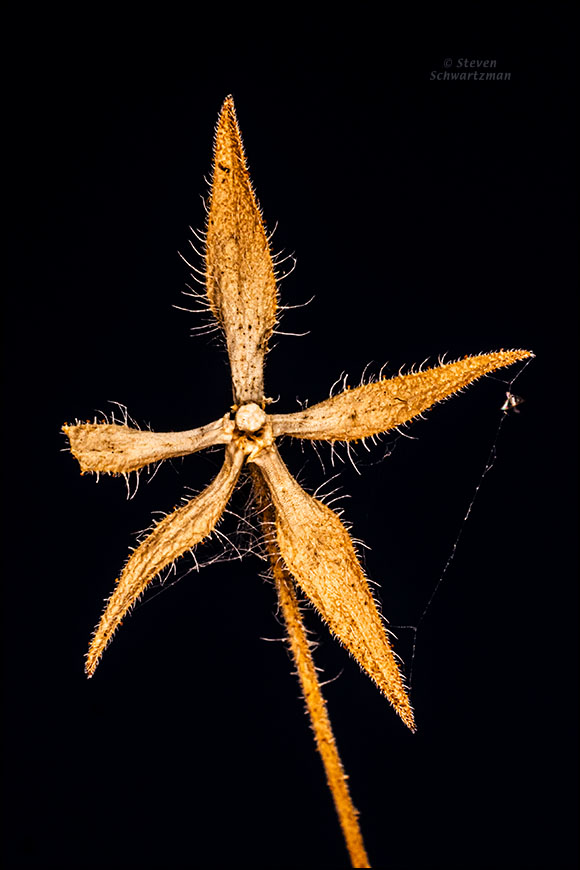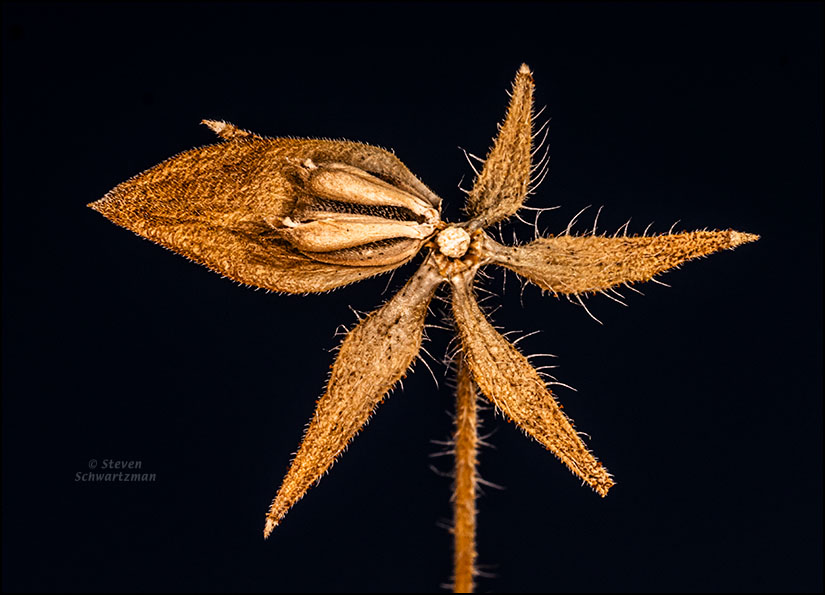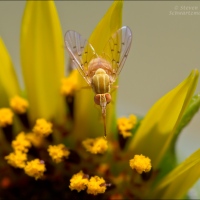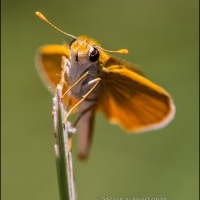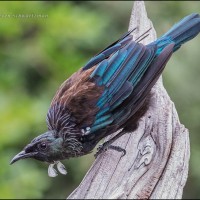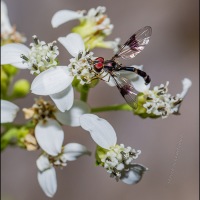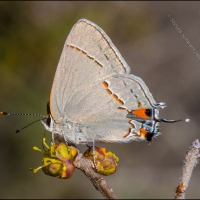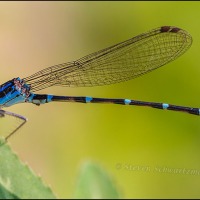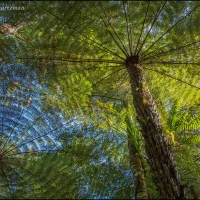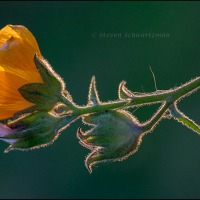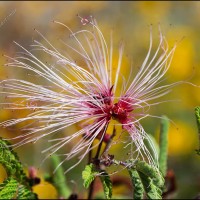Posts Tagged ‘brown’
Two takes on drying black willow leaves
On September 9th at the western vertex of Sweet Leaf Lane in Pflugerville’s Brookfield Estates neighborhood I made a minimalist portrait of a drying black willow leaf, Salix negra. Nearby I noticed another black willow leaf that had fallen onto a Maximilian sunflower plant, Helianthus maximiliani. Presumably the leaf had continued drying and curling after it got caught on the sunflower plant.
§
§ § §
§
In order to combat climate change, would you—and I mean you personally—be willing to cut your use of coal, natural gas, and gasoline in half?
I didn’t think you would, especially once you realized that a significant amount of your electricity gets generated by burning coal and natural gas, so that reducing those two fuels means reducing your electricity.
I just finished reading Robert Bryce’s 2020 book A Question of Power: Electricity and the Wealth of Nations. Here’s a passage that’s relevant to my question.
About 75 percent of all the electricity in India is generated by coal-fired power plants, making it one of the world’s most coal-dependent countries. And its reliance on coal will likely continue for decades to come. In 2015, Jairam Ramesh, the former environment minister of India, told the Washington Post, “We cannot abandon coal.” He went on, saying, “It would be suicidal on our part to give up on coal for the next 15 to 20 years, at least, given the need.” By early 2019, India had some 36,000 megawatts of new coal-fired capacity under construction.
Whether all of that capacity gets completed remains to be seen. But India’s continuing reliance on coal illustrates the growing bifurcation in the global electricity sector. Most of the wealthy countries are running away from coal at the same time that developing countries are building hundreds of gigawatts of new coal-fired generation capacity. This bifurcation—and coal’s persistence in the global electricity mix—likely poses the single biggest challenge to the politicians and climate activists who want to see dramatic cuts in global carbon dioxide emissions.
The persistence of coal in India and other countries shows, again, that people will do whatever they have to do to get the electricity they need. It also shows that climate change concerns are not as important to decision makers as reliable electricity. Roger Pielke Jr. has dubbed this “the iron law of climate policy,” which says, “When policies on emissions reductions collide with policies focused on economic growth, economic growth will win out every time.” In fact, Pielke’s idea should be extended specifically to electricity and dubbed the Iron Law of Electricity: when forced to choose between dirty electricity and no electricity, people will choose dirty electricity every time.
Pielke, a professor at the University of Colorado as well as a highly regarded author on the politics of climate change and on sports governance, has since elaborated on the iron law. During an interview in Boulder, he explained it to me thusly: “The iron law says, we’re not going to reduce emissions by willingly getting poor. Rich people aren’t going to want to get poorer, poor people aren’t going to want to get poorer.” He continued, If there is one thing that we can count on it is that policymakers will be rewarded by populations if they make people wealthier. We’re doing everything we can to try to get richer as nations, as communities, as individuals. If we want to reduce emissions, we really have only one place to go and that’s technology.”
Earlier in the book, Robert Bryce described how he’d met a 44-year-old woman in rural India named Rehena. Fourteen years earlier her modest home had gotten connected to the electric grid, thanks to a rural electrification program that lets her pay about $1.50 per month.
What was it like before her home got electricity? I asked. And what was it like now? She immediately began talking about the difference that electricity had made to her children and their education. Thanks to electricity, her children were able to read books, practice their writing, and manage their schoolwork at night. That had had a clear and positive result: one of her daughters was attending college in Kolkata, a fact of which Rehena was clearly proud. After we’d talked for a while longer, I asked Rehena: “If you had lived in a house that had electricity when you were growing up, would you have gone to university too?” A brief smile flashed across her face, and without a nanosecond of hesitation she nodded her head to the right, in the way typical of many residents of West Bengal, and said, “Yes. I would have.”
There was no remorse. No bragging. No what-could-have-beens in her reply. Only a direct, matter-of-fact response—almost as if I’d asked her if the sun was going to come up in the east the next morning.
Darkness had kept this gracious and intelligent woman from achieving something that she knew was within her grasp. Here was a person who—had she been born in one of India’s cities instead of a rural agricultural area—would have gone to college. With a college education, she might have become a doctor, a lawyer, a nurse, or an engineer. By the time I met Rehena, I knew plenty of facts and statistics: the average resident of India uses about 800 kilowatt-hours of electricity per year, which is about a quarter of the global average. I understood the myriad correlations between electricity availability and health and wealth. But that fifteen-minute conversation that I had with Rehena and Joyashree made me see the light: Darkness kills human potential. Electricity nourishes it. It is particularly nourishing for women and girls.
© 2023 Steven Schwartzman
Sculptural
It’s still too early for goldenrod (Solidago sp.) to be flowering here. Last year’s dried out goldenrod plants, however, made good abstract photo subjects against a blue sky at the Riata Trace pond a few miles from home on August 18th.
✦
✦ ✦ ✦
✦
Time for a reminder. In my commentaries I do my best to find reliable sources to back up what I report. If you ever find what you think is a factual inaccuracy in anything I put forth, please point me to a contradictory source. While no one has done that so far, people are fallible, and I certainly could get something wrong. You may have a different opinion about something, but we have to get our facts right before we can advance to opinions about those facts.
Depending on the outlets you get your news from, I’m betting many of you won’t have heard some or maybe even most of the details below.
✦
A frequent theme in my commentaries these past three years has been lawlessness, both when legal authorities refuse to enforce existing laws, and also when legal authorities violate existing regulations themselves. Another theme has been the unequal application of the law, with a disfavored culprit getting harsh punishment while a favored culprit doesn’t even get prosecuted.
One recent set of instances of lawlessness involves Hunter Biden, the son of the person who at the time of his early nefarious activities was the vice president of the United States and is now the president. Lots of evidence has surfaced to confirm that during the past decade Hunter Biden engaged in influence peddling. As part of that, he and his associates set up at least 20 shell companies. A shell company is “an inactive company used as a vehicle for various financial maneuvers or kept dormant for future use in some other capacity.” According to the Cueto Law Group: “The use of shell companies to disguise business ownership from the law is one of the most common examples of illegal activity. This is often done to evade paying taxes or hide your identity should your business engage in unlawful activity.”
As PBS television station WHYY reported, a government document filed June 20 in U.S. District Court in Delaware “charged Biden with ‘willful failure’ to pay more than $200,000 in taxes on income of more than $3 million for 2017 and 2018.” As the WHYY story continued: “The crime of willful failure to pay federal taxes is a misdemeanor punishable by up to a year in prison and a $100,000 fine for each count, yet prosecutors agreed to recommend probation to the judge.” When the judge in charge of the case, Maryellen Norieka, looked through the lenient plea deal that prosecutor David Weiss had approved, she discovered, hidden in a side document that would let Hunter Biden entirely off the hook for lying on an application to purchase a gun, the fact that the government would also exempt Hunter Biden from all further prosecution on any other charges that could be brought for past criminal activity, even though Weiss claimed an investigation into other possible charges was still in progress. Have you ever heard of a prosecutor agreeing to a deal—much less a fantastic deal like that—before an investigation is finished? I haven’t. It reminds me of the purposely absurd “Sentence first, verdict afterwards” from Alice’s Adventures in Wonderland.” And even worse, as law professor Jonathan Turley wrote on August 21 in an editorial for the New York Post:
Now it appears that the controversial “sweetheart deal” was not the first choice of US Attorney David Weiss. He actually was planning to let Hunter walk without even a misdemeanor charge despite massive unpaid taxes, gun violations, and work as an unregistered foreign agent, among other alleged crimes.
The reason for his change at Justice, according to the New York Times? Those pesky whistleblowers.
That last charge is a violation of FARA, the Foreign Agent Registration Act. It’s relevant because the money being laundered came from countries like China and Ukraine, whose governments were seeking to influence official American policies through their payments.
Not long before the July 26th court proceedings in which judge Maryellen Norieka declined to accept the “sweetheart” plea deal, two career IRS agents who were in charge of the investigation into Hunter Biden’s failure to pay taxes testified that superiors repeatedly blocked aspects of their investigation into that matter.
Following the testimony of the veteran IRS inspectors and then Judge Maryellen Norieka’s rejection of the super-lenient plea deal, on August 11th U.S. attorney general Merrick Garland appointed Davis Weiss—the same government attorney who had arranged for the sham plea deal in the first place—to be Special Counsel and look further into the matter. That appointment appears to be unlawful.
On the Cornell University website I found a page titled “CFR § 600.3 – Qualifications of the Special Counsel,” where CFR stands for Code of Federal Regulations. Here’s how it reads, with two relevant parts put in bold type.
(a) An individual named as Special Counsel shall be a lawyer with a reputation for integrity and impartial decisionmaking, and with appropriate experience to ensure both that the investigation will be conducted ably, expeditiously and thoroughly, and that investigative and prosecutorial decisions will be supported by an informed understanding of the criminal law and Department of Justice policies. The Special Counsel shall be selected from outside the United States Government. Special Counsels shall agree that their responsibilities as Special Counsel shall take first precedence in their professional lives, and that it may be necessary to devote their full time to the investigation, depending on its complexity and the stage of the investigation.
(b) The Attorney General shall consult with the Assistant Attorney General for Administration to ensure an appropriate method of appointment, and to ensure that a Special Counsel undergoes an appropriate background investigation and a detailed review of ethics and conflicts of interest issues. A Special Counsel shall be appointed as a “confidential employee” as defined in 5 U.S.C. 7511(b)(2)(C).
Notice that the Special Counsel “shall be selected from outside the United States Government,” yet David Weiss is obviously inside the federal government. And of course there’s a conflict of interests. David Weiss was willing to give Hunter Biden a “sweetheart” deal—and that was after delaying for years, long enough for the statute of limitations to expire on the earliest offenses that could have been charged. In addition, as the Washington Post reported on August 20, David Weiss used to work with Hunter Biden’s brother, Beau Biden.
Some people are pointing out that previous attorneys general have chosen a Special Counsel from within the government. They say there’s a difference between the U.S. Code and the Code of Federal Regulations. That’s confusing. We can’t have contradictory rules. Either the Special Counsel can be appointed from inside the government or the Special Counsel can not be appointed from inside the government. The regulations need to be made consistent.
Even if we can get past that, then there’s still the conflict of interest. The attorney who once worked with Hunter Biden’s brother, who dragged out the “investigation” so long that statutes of limitation expired on the most serious charges that could have been brought, and then offered an extraordinarily lenient plea deal, must not be the same person who continues investigating.
© 2023 Steven Schwartzman
Structures
On August 10th in far north Austin I photographed this seed head of a prairie parsley, Polytaenia nuttallii, with a stray fiber from a nearby Clematis drummondii vine caught on it. On the Blackland Prairie in northeast Austin a week earlier I’d gotten in even closer to reveal the structure on an eryngo, Eryngium leavenworthii.
§
§ § §
§
On August 18th the Wall Street Journal published Faith Bottum’s editorial “California’s Weapons of Math Destruction.” Here’s how it begins:
The California State Board of Education issued on July 12 a new framework for teaching math based on what it calls “updated principles of focus, coherence, and rigor.” The word “updated” is certainly accurate. Not so much “principles,” “focus,” “coherence” or “rigor.” California’s new approach to math is as unfair as it is unserious.
The framework is voluntary, but it will heavily influence school districts and teachers around the Golden State. Developed over the past four years, it runs nearly 1,000 pages. Among the titles of its 14 chapters are “Teaching for Equity and Engagement,” “Structuring School Experiences for Equity and Engagement” and “Supporting Educators in Offering Equitable and Engaging Mathematics Instruction.” The guidelines demand that math teachers be “committed to social justice work” to “equip students with a toolkit and mindset to identify and combat inequities with mathematics”—not with the ability to do math. Far more important is teaching students that “mathematics plays a role in the power structures and privileges that exist within our society.”
California’s education bureaucrats are seeking to reinvent math as a grievance study. “Big ideas are central to the learning of mathematics,” the framework insists, but the only big idea the document promotes is that unequal outcomes in math performance are proof of a racist society.
Plus ça change, et plus c’est la même chose, the French say: the more things change, the more they stay the same. I’ve been listening to educationists push the same claptrap for 50 years. The one thing that has changed is that the fanatics have now pretty much taken over the educational system, and they have the ideological as well as financial support of people who control power in government, the media, and big business.
It makes no difference to the education fanatics, who remain impervious to facts and data, that the implementation of their ideology has consistently led to declining student performance in the United States. Consider the NAEP: “The National Assessment of Educational Progress (NAEP) provides important information about student achievement and learning experiences in various subjects. Also known as The Nation’s Report Card, NAEP has provided meaningful results to improve education policy and practice since 1969.” Here’s one result of the NAEP for this year:
The 2023 mathematics scores for age 13 students at all five selected percentile levels declined compared to 2020. The declines ranged from 6 to 8 points for middle- and higher-performing students to 12 to 14 points for lower-performing students, with larger declines for lower performers in comparison to their higher-performing peers.
In other words, the “oppressed” students that the educationists claim to be helping the most fared the worst. In fact, an NAEP chart shows that for 2023 the age-13 math students in the bottom ten percent did as poorly as that group had in 1978. And it wasn’t just a result of the pandemic, during which many teachers’ unions insisted on shutting down schools for much longer than medically necessary. The same chart shows the performance of the lowest group had already been declining since 2012.
It makes no difference to the fanatics that China, whose leaders unabashedly say they’re working hard to unseat the United States, continues to educate its students in traditional, effective ways, while our kids fall further and further behind. Nothing makes any difference to the zealots who are in thrall to the proselytizing religion of “social justice.”
You can read the full editorial. What it recounts is mostly appalling, but it does report on some pushback from mathematics professors.
© 2023 Steven Schwartzman
August is a good time for mesquite pods
On August 10th in far north Austin I noticed that the pods on a mesquite tree (Prosopis glandulosa) were maturing nicely. They often curve as they dry out, and their surface has a beguiling texture.
(You’re welcome to compare last August’s takes on mesquite pods.)
§
§ § §
§
BIID
Bet you’ve never heard of BIID. Here’s the abstract to the article “Body integrity identity disorder (BIID)—is the amputation of healthy limbs ethically justified?“:
The term body integrity identity disorder (BIID) describes the extremely rare phenomenon of persons who desire the amputation of one or more healthy limbs or who desire a paralysis. Some of these persons mutilate themselves; others ask surgeons for an amputation or for the transection of their spinal cord. Psychologists and physicians explain this phenomenon in quite different ways; but a successful psychotherapeutic or pharmaceutical therapy is not known. Lobbies of persons suffering from BIID explain the desire for amputation in analogy to the desire of transsexuals for surgical sex reassignment. Medical ethicists discuss the controversy about elective amputations of healthy limbs: on the one hand the principle of autonomy is used to deduce the right for body modifications; on the other hand the autonomy of BIID patients is doubted. Neurological results suggest that BIID is a brain disorder producing a disruption of the body image, for which parallels for stroke patients are known. If BIID were a neuropsychological disturbance, which includes missing insight into the illness and a specific lack of autonomy, then amputations would be contraindicated and must be evaluated as bodily injuries of mentally disordered patients. Instead of only curing the symptom, a causal therapy should be developed to integrate the alien limb into the body image.
The comparison to people who want to have operations to change their sex is particularly interesting, don’t you think? If you’re a surgeon and someone asks you to amputate a healthy limb or sever a spinal cord, do you offer “affirming care”? If you don’t, will activists attack you as a BIID-phobe?
© 2023 Steven Schwartzman
Dry balsam gourd parts
The bright red fruits of the balsam gourd vine (Ibervillea lindheimeri) are its most conspicuous feature. A close look at one of these vines in Great Hills Park on July 13th revealed other interesting shapes and textures. One was a dry tendril, about three inches (7.6cm) of which you see above (click to enlarge). Another was the scrunched dry leaf shown below.
§
§ § §
§
Imagine you’re a foreigner who’s visiting the United States for the first time. In your hotel’s lobby a television is tuned to a cable news channel and you see some people identified as Democrats, but you don’t know what that word means. You turn to a nearby American and ask for an explanation of who Democrats are. The answer you get is: “A loose, shifting constellation of political and cultural people who vary according to context, place and time.”
Not understanding that explanation, a few minutes later you ask another American what a Democrat is, and you get this answer: “Someone who experiences the norms that are associated with Democrats in their social context as relevant to them.”
You thought you understood English pretty well, but now you’re beginning to wonder if you’ve overestimated your ability. A little later you turn to a third American and ask what a Democrat is. This time the answer you get is: “A Democrat, for me, is someone who feels that they are a Democrat.”
That still didn’t help, so you ask a fourth American, who says: “Every Democrat is a Democrat. Democrats are multifaceted, intergenerational, international. They are limitless, formless. Democrats are the world.”
A fifth American gives you an answer similar to what the third American said: “A Democrat is anyone who identifies as a Democrat.”
Now, just change the word Democrat to woman, and all the “definitions” are real ones that people have given in response to the question “What is a woman?” Those 5 are among the 26 non-definition definitions that mathematician and journalist Helen Joyce has compiled on her “What is a Woman” page. You’re welcome to read the other 21.
I made a similar point about non-definition definitions of a woman in a commentary on May 2nd.
© 2023 Steven Schwartzman
Easily recognizable seed head remains
Sometimes—I should probably say often—it’s hard to identify a plant from its dry remains. One exception in Austin is Texas yellow star, Lindheimera texana. Here are the remains of two seed heads that I immediately recognized in Schroeter Neighborhood Park on June 27th. If you want to see what the fresh flowers are like, take a look.
§
§ § §
§
Biology faces a grave threat from “progressive” politics that are changing the way our work is done, delimiting areas of biology that are taboo and will not be funded by the government or published in scientific journals, stipulating what words biologists must avoid in their writing, and decreeing how biology is taught to students and communicated to other scientists and the public through the technical and popular press. We wrote this article not to argue that biology is dead, but to show how ideology is poisoning it. The science that has brought us so much progress and understanding—from the structure of DNA to the green revolution and the design of COVID-19 vaccines—is endangered by political dogma strangling our essential tradition of open research and scientific communication. And because much of what we discuss occurs within academic science, where many scientists are too cowed to speak their minds, the public is largely unfamiliar with these issues. Sadly, by the time they become apparent to everyone, it might be too late.
That’s the summary of an important article in the July/August issue of Skeptical Inquirer, “The Ideological Subversion of Biology,” by Jerry A. Coyne and Luana S. Maroja. Here are the first two paragraphs of the article:
We’re all familiar with the culture wars that pit progressive Leftists against centrists and those on the Right. In the past, those skirmishes dealt with politics and sociocultural issues and in academia were restricted largely to the humanities. But—apart from the “sociobiology wars” of the seventies and our perennial battles against creationism—we biologists always thought that our field would avoid such struggles. After all, scientific truth would surely be immune to attack or distortion by political ideology, and most of us were too busy working in the lab to engage in partisan squabbles.
We were wrong. Scientists both inside and outside the academy were among the first to begin politically purging their fields by misrepresenting or even lying about inconvenient truths. Campaigns were launched to strip scientific jargon of words deemed offensive, to ensure that results that could “harm” people seen as oppressed were removed from research manuscripts, and to tilt the funding of science away from research and toward social reform. The American government even refused to make genetic data—collected with taxpayer dollars—publicly available if analysis of that data could be considered “stigmatizing.” In other words, science—and here we are speaking of all STEM fields (science, technology, engineering, and mathematics)—has become heavily tainted with politics, as “progressive social justice” elbows aside our real job: finding truth.
The article goes on to “give six examples of how our own field—evolutionary and organismal biology—has been impeded or misrepresented by ideology. Each example involves a misstatement spread by ideologues, followed by a brief explanation of why each statement is wrong.” The six ideological misstatements are:
- Sex in humans is not a discrete and binary distribution of males and females but a spectrum.
- All behavioral and psychological differences between human males and females are due to socialization.
- Evolutionary psychology, the study of the evolutionary roots of human behavior, is a bogus field based on false assumptions.
- We should avoid studying genetic differences in behavior between individuals.
- Race and ethnicity are social constructs, without scientific or biological meaning.
- Indigenous “ways of knowing” are equivalent to modern science and should be respected and taught as such.
You’re welcome to read the full article, from which I,
a non-scientist, learned some interesting things about science.
© 2023 Steven Schwartzman
Evergreen sumac isn’t always evergreen
While most of the leaves on an evergreen sumac (Rhus virens) do remain green in December, it’s not unusual for the leaves on a damaged or dying branch to turn brown or maroon. That was the case with this one in my Great Hills neighborhood on December 21st of the recently expired year. Call it fall foliage by proxy.
§
§ § §
§
Because native speakers of a language learn it by assimilation, they don’t notice many things that a foreigner does when learning the language. If you’re a native English speaker, you’ve probably never thought about the familiar prefix re-. If a foreigner asked you about it, you might think for a bit and say something like: We put re- in front of a verb to convey the meaning ‘back’ or ‘again.’ For example: “The platoon captured the high ground, later got repulsed, and then recaptured the high ground.” Or: “This story, which originated in China, has been retold in many other countries.”
So far, so good. But now suppose the foreigner asks you: “How do I know which verbs I’m allowed to stick re- on and which verbs I’m not allowed to stick re- on?” Your likely answer will be: “What do you mean?” As a native English speaker, you’ve almost certainly never realized that we can’t just put re- on any verb we want to. Take these examples:
- I was in Barcelona in 1985 and I rewas in Barcelona in 1990.
- Come visit as soon as you can. Recome as often as you’d like.
- She wanted to be in movies but after repeatedly failing to get a part she gave up on the idea. A year later she rewanted to be in movies.
- Look at that beautiful sunset. Relook at it to really appreciate it.
- There are people who’ve had a fortune, gone bankrupt, and eventually rehad a fortune.
- Once I knew where I was going in life. Later I lost my way. Now I reknow where I’m going.
A foreigner sees nothing illogical about any of those uses of re-, but a native speaker would never say any of them (except maybe in jest). Someone who knows a little about word origins might be aware that re- got borrowed from Latin, whereas the verbs in those examples—be, come, want, look, have, and know—are all native English words, and so maybe English just doesn’t put Latin-derived re- on native English verbs. There are a couple of problems with that hypothesis. First of all, very few English speakers know which words are native. More importantly, we can stick re- on some native verbs: we can rebuild a church, redo a chemistry experiment, remake a tarnished image, reset a slow clock, and resend an email that wasn’t received.
The situation is even more complicated: sometimes we can use re- with a native English verb but doing so changes the meaning to something other than ‘back’ or ‘again.’ Compare these two:
- Years after his mother’s death, he still recalled her fondly.
- He called his mother last night but she had company and couldn’t talk long. He recalled her the next morning.
The recall in the first sentence does not mean ‘call again’; it means ‘remember.’ In the second example, we’d normally say “he called her back”; we wouldn’t say “he recalled her,” or maybe we could marginally get away with that if we paused slightly between the re- and the called; we’d write that with a hyphen: “he re-called her.”
Now you see how complicated the situation is. I haven’t figured out a way of telling which English verbs we can stick re- on, which we can’t, and which we might get away with although it would sound a little strange. Native speakers somehow just know.
© 2023 Steven Schwartzman
Drying leaves
While in Great Hills Park on the morning of July 15th I made portraits of several kinds of drying leaves. The top photograph shows those of a white prickly poppy, Argemone albiflora. I don’t know what kind of leaves got pulled together in the webbing you see below, nor what critter did the pulling.
§
§ § §
§
Incompetent Competencies
The other day I read with horror about how the Association of American Medical Colleges (AAMC) just released its official Diversity, Equity, and Inclusion (DEI) Competencies. For me, competency means that doctors are thoroughly educated in anatomy, disease, and medicine. For the AAMC, competency means that medical students and doctors will glibly prattle all the required woke dogma. As John D. Sailer notes in an article about this for the National Association of Scholars, “the president of the AAMC and the chair of the AAMC’s Council of Deans emphatically stated their support: ‘We believe this topic deserves just as much attention from learners and educators at every stage of their careers as the latest scientific breakthroughs’—a truly remarkable statement of priorities from the leaders of America’s foremost medical education association.”
And as I note here now, time spent on “woke” drivel means time stolen from a proper medical education. It means less-competent doctors, and therefore poorer medical care and ultimately more deaths. On other occasions I’ve noted that the rearranged Holy Trinity of Diversity, Inclusion, and Equity yields the acronym DIE. Now it’s clear that the acronym will be even more apt than I realized.
Here are a few of the cant- and jargon-filled incompetent competencies the AAMC is pushing:
Demonstrates knowledge of the intersectionality of a patient’s multiple identities and how each identity may result in varied and multiple forms of oppression or privilege related to clinical decisions and practice [students]
Identifies systems of power, privilege, and oppression and their impacts on health outcomes (e.g., White privilege, racism, sexism, heterosexism, ableism, religious oppression) [students]
Articulates race as a social construct that is a cause of health and health care inequities, not a risk factor for disease [students]
Practices moral courage, self-advocacy, allyship, and being an active bystander or upstander to address injustices [residents]
Role models anti-racism in medicine and teaching, including strategies grounded in critical understanding of unjust systems of oppression [faculty]
Role models how knowledge of intersectionality informs clinical decision-making and practice [faculty]
If you want to feel sick, go ahead and read the article.
© 2022 Steven Schwartzman
Two cattail abstractions
From a month ago today at Cypress Creek Park come these two abstractions of cattails (Typha sp.). The first view shows the transition from pistillate (female) flowers at the bottom to staminate (male) flowers above. The second photograph obviously shows cattail leaves turning brown.
❧
❧ ❧ ❧
❧
We have gathered here to affirm a faith, a faith in a common purpose, a common conviction, a common devotion. Some of us have chosen America as the land of our adoption; the rest have come from those who did the same. For this reason we have some right to consider ourselves a picked group, a group of those who had the courage to break from the past and brave the dangers and the loneliness of a strange land. What was the object that nerved us, or those who went before us, to this choice? We sought liberty; freedoms from oppression, freedom from want, freedom to be ourselves. This we then sought; this we now believe that we are by way of winning. What do we mean when we say that first of all we seek liberty? I often wonder whether we do not rest our hopes too much upon constitutions, upon laws and upon courts. These are false hopes; believe me, these are false hopes. Liberty lies in the hearts of men and women; when it dies there, no constitution, no law, no court can even do much to help it. While it lies there it needs no constitution, no law, no court to save it. And what is this liberty which must lie in the hearts of men and women? It is not the ruthless, the unbridled will; it is not freedom to do as one likes. That is the denial of liberty, and leads straight to its overthrow. A society in which men recognize no check upon their freedom soon becomes a society where freedom is the possession of only a savage few; as we have learned to our sorrow.
What then is the spirit of liberty? I cannot define it; I can only tell you my own faith. The spirit of liberty is the spirit which is not too sure that it is right; the spirit of liberty is the spirit which seeks to understand the mind of other men and women; the spirit of liberty is the spirit which weighs their interests alongside its own without bias; the spirit of liberty remembers that not even a sparrow falls to earth unheeded; the spirit of liberty is the spirit of Him who, near two thousand years ago, taught mankind that lesson it has never learned but never quite forgotten; that there may be a kingdom where the least shall be heard and considered side by side with the greatest. And now in that spirit, that spirit of an America which has never been, and which may never be; nay, which never will be except as the conscience and courage of Americans create it; yet in the spirit of that America which lies hidden in some form in the aspirations of us all; in the spirit of that America for which our young men are at this moment fighting and dying; in that spirit of liberty and of America I ask you to rise and with me pledge our faith in the glorious destiny of our beloved country.
That was the speech that Judge Learned Hand gave to a crowd in New York City’s Central Park on May 21, 1944, where, according to Digital History, “1.5 million people gathered for an event billed as ‘I Am an American Day.’ Hand aimed his remarks at 150,000 newly naturalized citizens.”
© 2022 Steven Schwartzman
Shelf fungus
At Palmetto State Park on November 23rd I photographed several kinds of shelf fungi. Not till I processed this picture the next day did I notice a spider over on the left side—and a strange spider it was, with only six legs. What happened to the other two, I don’t know. You’re welcome to click the excerpt below for a closer look at the six-legged spider.
‡
‡ ‡ ‡
‡
I call your attention to the article “The Empowering of the American Mind: 10 Principles for Opposing Thought Reform in K-12,” in which Greg Lukianoff fleshes out each of these:
- Principle 1: No compelled speech, thought, or belief.
- Principle 2: Respect for individuality, dissent, and the sanctity of conscience.
- Principle 3: Teachers & administrators must demonstrate epistemic humility.
- Principle 4: Foster the broadest possible curiosity, critical thinking skills, and discomfort with certainty.
- Principle 5: Foster independence, not moral dependency.
- Principle 6: Do not teach children to think in cognitive distortions.
- Principle 7: Do not teach the ‘Three Great Untruths.’
- Principle 8: Take student mental health more seriously.
- Principle 9: Resist the temptation to reduce complex students to limiting labels.
- Principle 10: If it’s broke, fix it. Be willing to form new institutions that empower students and educate them with principles of free, diverse, and pluralistic society.
© 2021 Steven Schwartzman










